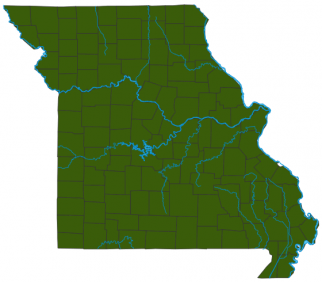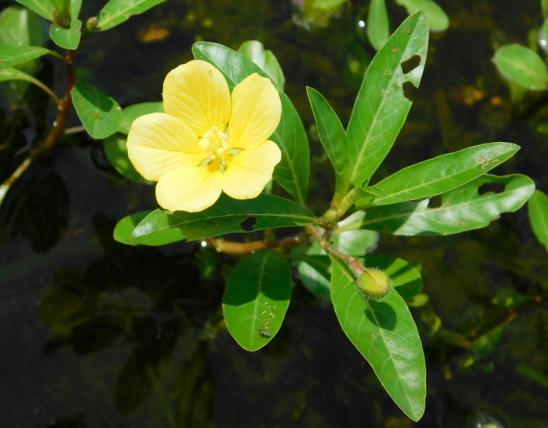
“Hispid” is a term botanists use to describe plant hairs that are stiff, rigid, or bristly, which fits this densely hairy buttercup. It is a sparsely to densely hairy perennial with upright stems, sometimes spreading at the base and rooting at the nodes. Flowers 5-petaled, yellow, with many stamens; petals often recurved, twice as long as sepals. Blooms March–June. Leaves (at least some) compound with 3 parts, each leaflet coarsely toothed, often with 3 lobes, the lateral two sessile and the terminal one with or without a very short stem. Overall leaf shape is wide, ovate or nearly heart-shaped, at times wider than long. Basal leaves present at flowering and have long petioles; leaves are progressively smaller and have shorter petioles higher on the stem.
Similar species: There are 18 species of Ranunculus recorded for Missouri. Key features for separating hispid buttercup from the other most common Missouri buttercups are its having all leaves (including the basal ones) lobed, divided, or dissected; the petals showy and longer than the sepals, and the leaves equally as wide, or wider, than long.
Height: to 1 foot.

Scattered to common south of the Missouri River, progressively less abundant farther north.
Habitat and Conservation
Bottomland forests, rich to dry upland forests, banks of streams and rivers, bases of bluffs, bottomland prairies, moist swales of upland prairies, margins of sinkhole ponds and sloughs, fens, acid seeps, marshes, and occasionally savannas and edges of glades; also pastures, ditches, railroads, and roadsides.
Status
Botanists continue to study this and closely related buttercups. Today, our concept of this species comprises 3 different varieties in our state that were once considered separate species. Of these, var. nitidus (long called R. septentrionalis, swamp buttercup) is the most commonly encountered in our state. Its stems are lax or loosely ascending, often rooting at the nodes, and the sepals recurve about 1 mm above the sepal base; it may also be less hairy than other hispid buttercup varieties.
Human Connections
John Kieran reminds us: “For centuries to come . . . children will be holding the golden chalices close under the chins of their companions to tell by the yellow reflection ‘whether or not they like butter.’ The test always brings the same answer. Apparently all children like butter!”
Ecosystem Connections
The seeds of buttercups are eaten by birds, including turkey and grouse, and small rodents. Although there is an enduring erroneous belief that buttercups, as forage plants, makes butter yellow, cows and other mammalian herbivores actually avoid buttercups because the foliage is poisonous to eat.



































